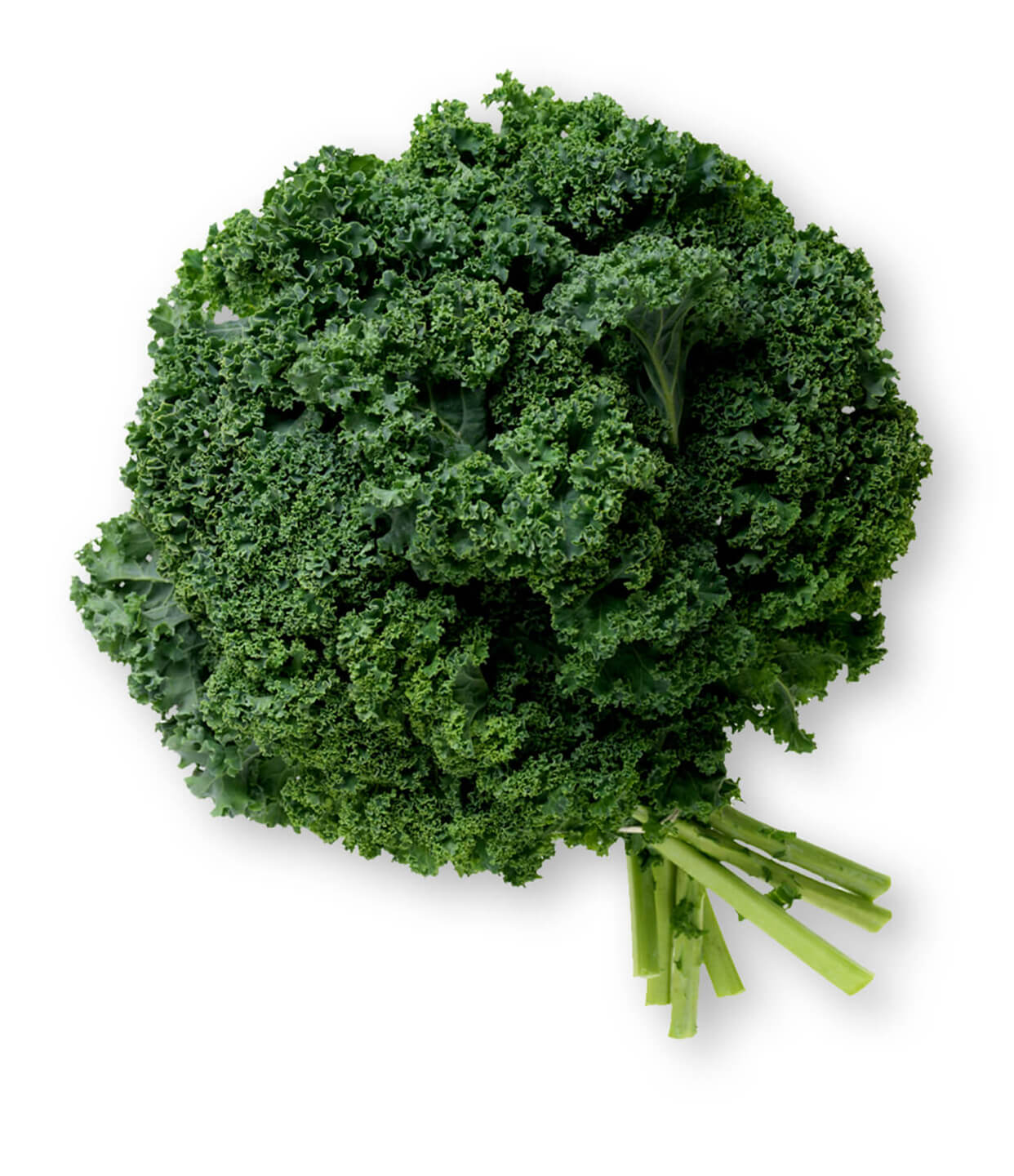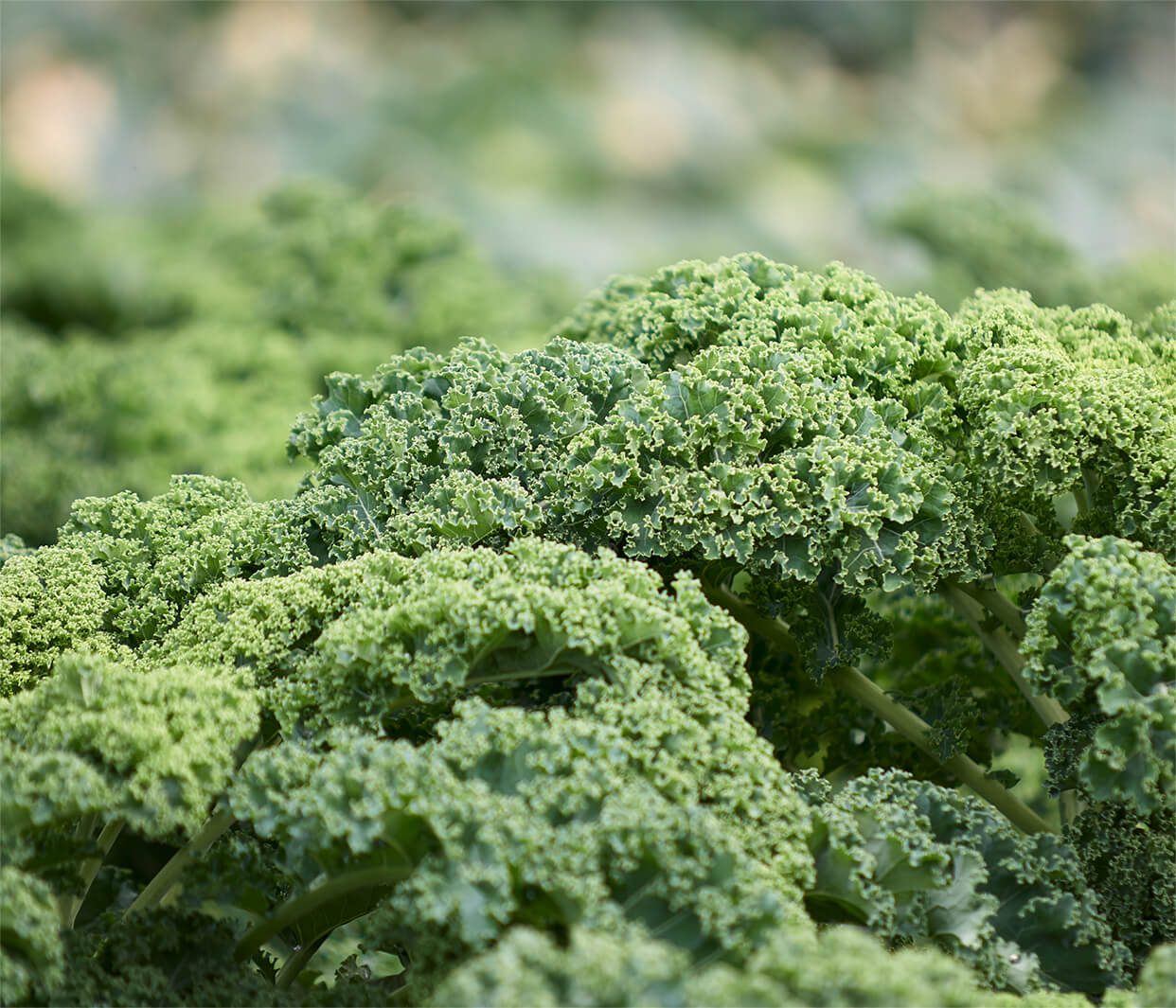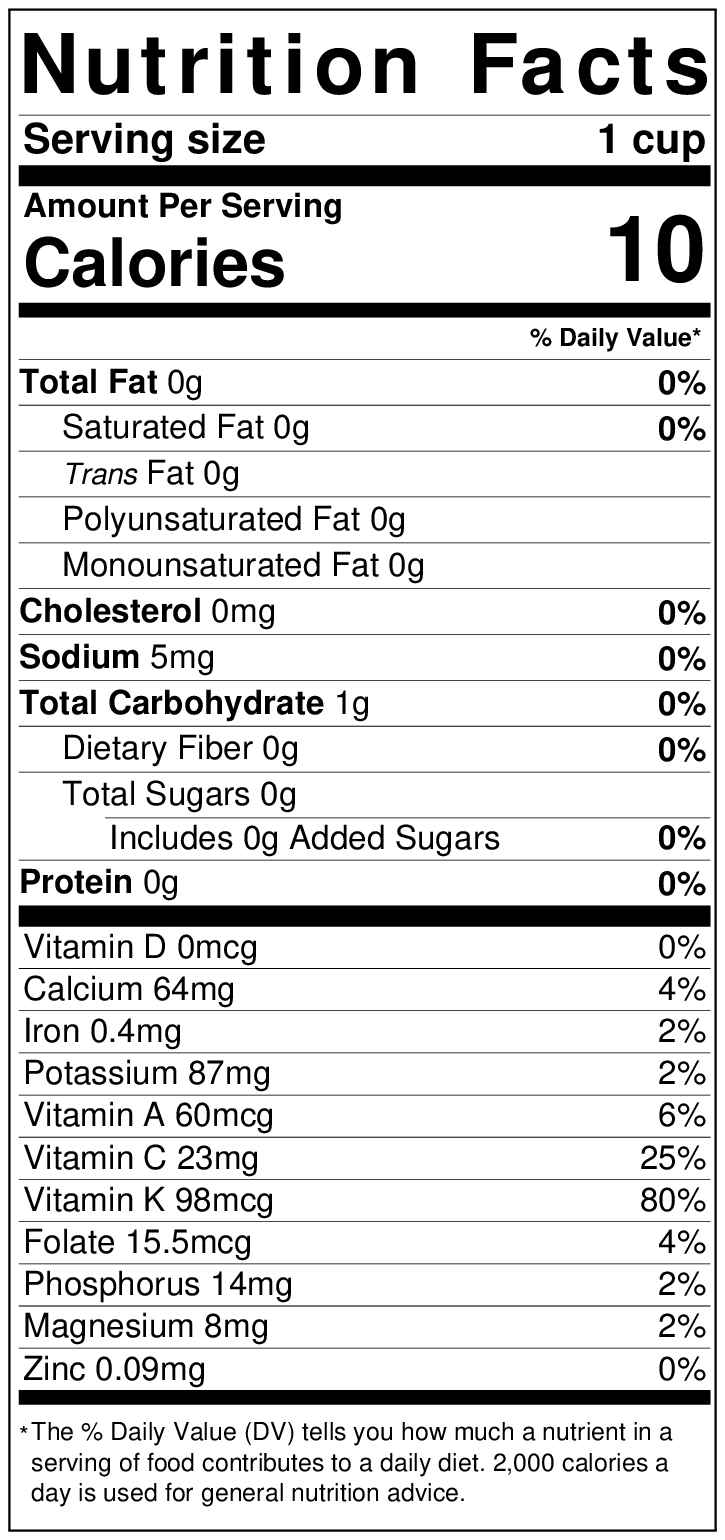
Kale
SENSORY PROFILE:
Kale is a member of the cruciferous brassica family along with broccoli, Brussels sprouts, cabbage and cauliflower. This nutrient-dense, dark leafy green has a slightly bitter or peppery bite when raw. Kale comes in several types from Lacinato to more tender baby kale. Each variety has its own texture, color, and flavor – all are loaded with antioxidants, vitamins A, K and C along with other nutrients like fiber. In fact, kale has 50% more potassium per calorie than a banana.
SIMILAR GREENS:
Baby Kale
Spinach
Chard
Endive
Escarole
Experiencing Kale:
Similar to Green Cabbage, Kale is a sturdy green that changes significantly based on preparation. This is an excellent cooking green but can also be enjoyed raw and the texture can be modified by the way it is cut/prepared and the maturity at the time of harvest.

Pro Tip: If you like bitter leafy greens explore using other types like Chard, Endive or Escarole.
Pro Tip: if you are looking to balance the bitterness in leafy greens, pair them with complementary flavors including salt, sweet and acidic flavors. Bitter leafy greens stand up to bold flavors well and provide a strong backbone to build upon
Color
Kale delivers a 5: out of 5 for color with a dark green hue.
Texture
Kale delivers a 3 out of 5 for overall texture but as previously stated, this texture can vary based on maturity and modified based on preparation.
Overall Flavor
Kale delivers a 4 out of 5 for flavor leading with bitterness and minimal sweetness.
Kale Nutrition Facts
- Kale provides an excellent source of vitamin C and vitamin K
- Also provides folate, vitamin A, flavanols, lutein and zeaxanthin.


Growing Information
Kale is grown in several California growing areas. When planted from seed, kale will be ready to harvest within 55 to 75 days. It can also be transplanted as seedlings, which will speed up the growing time to about 30 to 40 days from planting to harvest. Most kale varieties are harvested multiple times. When the plant reaches maturity, harvest crews strip or cut leaves, leaving the stalk and top leaves to regenerate more leaves that will be harvested again in a few weeks. One plant can be cut 3 to 4 times yielding product for up to nine months.
Usage Ideas
Kale can be eaten in so many ways from chopped and added to salads or cooked. People also buy it by the bagful to add to smoothies.
 Try this delicious salad:
Try this delicious salad:
Frequently Asked Questions
Kale provides many vitamins and minerals that are very beneficial to our health. In fact, Kale is considered a nutrition standout! Learn why here.
The best way to eat kale depends on your personal preferences. Find easy ways to add kale to your meals here.
It’s not! In fact, Kale is really good for you. Learn why here.
Studies have shown that cooking kale can slightly reduce its vitamin and mineral content. However, kale remains a healthy choice whether enjoyed cooked or raw. Learn more here.
Stay in the Know About Lettuce
Sign up for Health & Safety Alerts
Get the facts about lettuce and why it’s one of the safest and healthiest foods we can eat.

